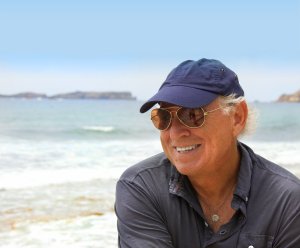By Maddie Scott
“At dawn in an outlying district of Warsaw, sunlight swarmed around the trunks of blooming linden trees and crept up the white walls of a 1930s stucco and glass villa where the zoo director and his wife slept in a bed crafted from white birch, a pale wood used in canoes, tongue depressors, and Windsor chairs.” So begins the Zookeeper’s Wife, a war story by Diane Ackerman, an acclaimed poet, essayist and naturalist. In the first sentence, it is clear that Ms. Ackerman is primarily a naturalist who likes to create sentences that have the same beauty in the words as the nature she is describing. The war story seems to at times have a secondary role in the Zookeeper’s Wife. For example, when describing the curfew the Poles were subject to under German occupation, Ackerman writes, “After curfew, Poles could no longer stroll under a canopy of stars.” This paragraph continues with a detailed explanation of meteor showers, including description and history, with only cursory mention of the Poles who could still watch such showers from balconies or windows, and a brief comparison of meteors to German gunfire and bombs.
The reason this works for some readers is that Diane Ackerman seems to be a kindred spirit of sorts with the main character in the book, Antonina Zabinski, the Zookeeper’s Wife. Antonina had the same connection with nature that Ms. Ackerman has. As the author writes,“Antonina loved to slip out of her human skin for a while and spy on the world through each animal’s eyes, and she often wrote from that outlook, in which she intuited their concerns and know-how, including what they might be seeing, feeling, fearing, sensing, remembering.” Their residence at the Zoo, the Villa, was home to many animals that participated in family life, including a badger, rabbit and hamster.

Amidst the descriptions of nature, Antonina and Jan’s (her husband) zoo animals and family, Ackerman weaves in the story of occupied Warsaw, her own family’s fight for survival (Antonina left the Zoo and the Villa more than once with her young son during particularly dangerous times of bombing and fighting), and the remarkable resistance efforts that she and her husband participated in. Jan was part of the Home Army and took part in the Warsaw Polish Uprising. His connection with a Jewish entomologist, Szymon Tenenbaum, who left his collection of insects at the Villa for safekeeping when he was forced from his home, opened the doors to the Ghetto (the Polish director of the Warsaw Ghetto’s Labor Bureau had a mutual admiration for Tenenbaum and his collection of insects) and Jan was able to help many Jewish friends and strangers escape. Many of these people took up temporary (and some more semi-permanent) residence at the Villa. All told, the Zabinskis helped to save approximately 300 Jews. Antonina demonstrated the same strength, compassion and resolve in helping their Jewish “guests” as she did in keeping her family safe.
The Zoo itself went through many changes during the war. Many animals were killed during the first days of bombing in Warsaw, and many more were moved by the “benevolent” Lutz Heck, the director of the Berlin Zoo, and a Nazi, who tried to convince Antonina that he had the animals’ best interest in mind (while later taking a hunting party back to the Warsaw Zoo to kill remaining animals). After the war, Antonina and Jan restore the Warsaw Zoo, before Jan’s retirement from the Zoo in 1951.
Ackerman shows great skill in representing the Zookeeper’s wife’s strengths. In the concluding chapter, she relays Jan’s quotes via Danka Narnish, an Israeli reporter, “Her confidence could disarm even the most hostile. It wasn’t just that she identified with them, but from time to time she seemed to shed her own human traits and become a panther or hyena. Then, able to adopt their fighting instinct, she arose as a fearless defender of her kind.”
The movie adaptation of the Zookeeper’s Wife is visually appealing, and it is easier to follow the comings and goings of the Jews that the Zabinski’s save, rather than in the book with its heavy description and seemingly non-linear timeline. Antonina, played by Jessica Chastain, convincingly conveys her love for the people she saves, animals, and her son. Her love for her husband, however, is clouded by a fictionalized romance between her and Lutz Heck, played by Daniel Bruhl. The movie takes evidence of Lutz’ admiration of Antonina from the book and turns it into a mutual attraction, much of which the movie is based upon. Antonina is also portrayed as soft-spoken and unsure of herself. Despite the great things she accomplishes in helping Jews to escape the Warsaw ghetto by giving them shelter in her house, the sense that the audience gathers from the movie is that she is overly emotional, tempted romantically by a Nazi who in the book she is clearly wary of from the beginning, and not an equal partner to her husband. The movie also takes great artistic license in portraying a young Jewish woman who was taken in by the Zabinskis after being brutally raped by Germans in the Ghetto. While such atrocities certainly happened again and again during the war, this character is created for the movie, and not mentioned in the book.
If one wants to learn of the remarkable story of Antonina Zabinski and to get a more accurate representation, it is far better to read the book than to see the movie.



 in Japan unless you’re famous. Usually, your agent books events and promotes you, but they needed management that didn’t arrange Sunday concerts and understood their religious mindset. It is tough finding this kind of company, and they couldn’t locate one. Then, they were offered a great contract, and went to the interview for signing. Although the deal seemed really good, it required Sunday performances. Pay was great, working environment was great, and support was also great. It seemed so hard to say “NO” to this offer, but they did say “NO” to keep the Sabbath day holy. The company miraculously accepted their “NO” response, and released them from Sunday commitments.
in Japan unless you’re famous. Usually, your agent books events and promotes you, but they needed management that didn’t arrange Sunday concerts and understood their religious mindset. It is tough finding this kind of company, and they couldn’t locate one. Then, they were offered a great contract, and went to the interview for signing. Although the deal seemed really good, it required Sunday performances. Pay was great, working environment was great, and support was also great. It seemed so hard to say “NO” to this offer, but they did say “NO” to keep the Sabbath day holy. The company miraculously accepted their “NO” response, and released them from Sunday commitments.

 nature of the family unit. We declare to the world the value and importance of family life, but much of the confusion and difficulty we find existing in the world today is being traced to the deterioration of the family. Home experiences where children are taught and trained by loving parents are diminishing.” One Disney movie that strongly emphasizes family is Lilo and Stitch. “Ohana means family. Family means nobody gets left behind or forgotten.” This line was made famous by Stitch who was adopted by Lilo’s family.
nature of the family unit. We declare to the world the value and importance of family life, but much of the confusion and difficulty we find existing in the world today is being traced to the deterioration of the family. Home experiences where children are taught and trained by loving parents are diminishing.” One Disney movie that strongly emphasizes family is Lilo and Stitch. “Ohana means family. Family means nobody gets left behind or forgotten.” This line was made famous by Stitch who was adopted by Lilo’s family.
 Harrison Ford, widely recognized as one of those actors who just won’t ride into the sunset. That is of course to the exception to his ever long-lasting desire to get out of the Star Wars movies. Ford was in the first Blade Runner back in 1982 and is very excited to be back on the big screen playing a character that he hasn’t visited in nearly 30 years.
Harrison Ford, widely recognized as one of those actors who just won’t ride into the sunset. That is of course to the exception to his ever long-lasting desire to get out of the Star Wars movies. Ford was in the first Blade Runner back in 1982 and is very excited to be back on the big screen playing a character that he hasn’t visited in nearly 30 years. knowing the plot, characters, or theme of the movie. The character progression of Harrison Ford’s character will be something to keep an eye out for and will electrify movie theaters all across the country.
knowing the plot, characters, or theme of the movie. The character progression of Harrison Ford’s character will be something to keep an eye out for and will electrify movie theaters all across the country.

 can be traced back to
can be traced back to  son, reminding him of the wonderful support family offers. Despite the influence of Cipher’s team, he reunites with the family reclaiming the satisfaction that brings. Toretto’s family still welcomes him despite his sins. “You don’t turn back on your family, even when they do” Toretto utters in “Fast and Furious Six.” He thanks family members for their foregiveness.
son, reminding him of the wonderful support family offers. Despite the influence of Cipher’s team, he reunites with the family reclaiming the satisfaction that brings. Toretto’s family still welcomes him despite his sins. “You don’t turn back on your family, even when they do” Toretto utters in “Fast and Furious Six.” He thanks family members for their foregiveness.
 The excitement was there, the technology was available, and yet many of BYU-Hawaii’s students were not happy with the result of the movie. Was it the anticipation? Could it be that the past can’t be replicated in the present? Whatever the answer is the BYU-Hawaii student body was not happy with the movie and voiced their opinions about where the movie went wrong.
The excitement was there, the technology was available, and yet many of BYU-Hawaii’s students were not happy with the result of the movie. Was it the anticipation? Could it be that the past can’t be replicated in the present? Whatever the answer is the BYU-Hawaii student body was not happy with the movie and voiced their opinions about where the movie went wrong. It lagged on forever and when it was time to morph and get the action rolling the movie came up short. I expected the action to be like the superhero movies but it didn’t live up to the hype.” Much of what the students said about the movie had to do with the pace. Power Rangers had the expectation of living up to the hype of so many of the superhero movies that are currently in production. When BYU-Hawaii students were asked how it compared to the Marvel and DC comic movies the overall consensus was, “NOT EVEN CLOSE!”
It lagged on forever and when it was time to morph and get the action rolling the movie came up short. I expected the action to be like the superhero movies but it didn’t live up to the hype.” Much of what the students said about the movie had to do with the pace. Power Rangers had the expectation of living up to the hype of so many of the superhero movies that are currently in production. When BYU-Hawaii students were asked how it compared to the Marvel and DC comic movies the overall consensus was, “NOT EVEN CLOSE!”
 It is the tale of two teenagers in World War II France: A blind girl and a male member of the Hitler youth. The latter figuratively eyeless. These are disparate worldviews, but their lives eventually converge. The merge of mindsets not only makes a good story, but forces the reader to confront delicious dilemmas avoided in our religious lives. Why don’t we recognize the limitations of authority? What is it about evil that makes it so difficult to discern?
It is the tale of two teenagers in World War II France: A blind girl and a male member of the Hitler youth. The latter figuratively eyeless. These are disparate worldviews, but their lives eventually converge. The merge of mindsets not only makes a good story, but forces the reader to confront delicious dilemmas avoided in our religious lives. Why don’t we recognize the limitations of authority? What is it about evil that makes it so difficult to discern? Life may impair us, but never obstructs our drive to uncover love in its dark recesses. Read this novel, and don’t be afraid to take a year.
Life may impair us, but never obstructs our drive to uncover love in its dark recesses. Read this novel, and don’t be afraid to take a year.
 some bring inflatable sharks to concerts and even haul in sand to simulate a beach in parking lots. The new Netflix documentary, “Parrot Heads” transcends the foundational; it’s a look at “Parrot Head 2.0,” which has spawned an entire rock genre, “trop rock.” Trop rock bands and festivals are a vestige of Buffett culture, supporting an argument of this blog that this is truly pop culture religion.
some bring inflatable sharks to concerts and even haul in sand to simulate a beach in parking lots. The new Netflix documentary, “Parrot Heads” transcends the foundational; it’s a look at “Parrot Head 2.0,” which has spawned an entire rock genre, “trop rock.” Trop rock bands and festivals are a vestige of Buffett culture, supporting an argument of this blog that this is truly pop culture religion. Considerthe song, Fins; fans sway in unison and repeat various hand movements.
Considerthe song, Fins; fans sway in unison and repeat various hand movements. The documentary is riddled with compelling facts such as $42 MILLION raised FOR CHARITIES. Parrott heads DONATED MORE THAN THREE MILLION HOURS OF VOLUNTEER TIME SINCE THEIR INCEPTION 25 YEARS AGO. What could be more religious than that?
The documentary is riddled with compelling facts such as $42 MILLION raised FOR CHARITIES. Parrott heads DONATED MORE THAN THREE MILLION HOURS OF VOLUNTEER TIME SINCE THEIR INCEPTION 25 YEARS AGO. What could be more religious than that?
 the warning signs that you can look for in someone who is contemplating harming themselves. This story is phenomenally written and brilliantly directed.” Leishman, who also attempted suicide in high school added, “I have heard a lot of speculation that this story is ‘unrealistic’ and for some it may be, but to me this felt like I was watching a TV series of my high school years on Netflix and it was extremely real.”
the warning signs that you can look for in someone who is contemplating harming themselves. This story is phenomenally written and brilliantly directed.” Leishman, who also attempted suicide in high school added, “I have heard a lot of speculation that this story is ‘unrealistic’ and for some it may be, but to me this felt like I was watching a TV series of my high school years on Netflix and it was extremely real.” and the affects it has on families who deal with it. In an article produced by the Church, they write, “Suicide is a global public health issue that can often be prevented. While it is a complex situation with no single cause, the risks can be reduced when family, friends, ward members, and mental health professionals come together to help those who are struggling. Everyone can play a role in suicide prevention and should learn the risk factors and warning signs.”
and the affects it has on families who deal with it. In an article produced by the Church, they write, “Suicide is a global public health issue that can often be prevented. While it is a complex situation with no single cause, the risks can be reduced when family, friends, ward members, and mental health professionals come together to help those who are struggling. Everyone can play a role in suicide prevention and should learn the risk factors and warning signs.”